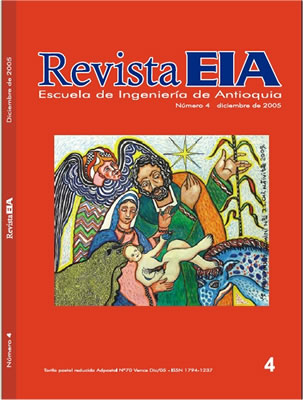CABLES MUSCULARES
CABLES MUSCULARES


This work is licensed under a Creative Commons Attribution-NonCommercial-NoDerivatives 4.0 International License.
Copyright statement
The authors exclusively assign to the Universidad EIA, with the power to assign to third parties, all the exploitation rights that derive from the works that are accepted for publication in the Revista EIA, as well as in any product derived from it and, in in particular, those of reproduction, distribution, public communication (including interactive making available) and transformation (including adaptation, modification and, where appropriate, translation), for all types of exploitation (by way of example and not limitation : in paper, electronic, online, computer or audiovisual format, as well as in any other format, even for promotional or advertising purposes and / or for the production of derivative products), for a worldwide territorial scope and for the entire duration of the rights provided for in the current published text of the Intellectual Property Law. This assignment will be made by the authors without the right to any type of remuneration or compensation.
Consequently, the author may not publish or disseminate the works that are selected for publication in the Revista EIA, neither totally nor partially, nor authorize their publication to third parties, without the prior express authorization, requested and granted in writing, from the Univeridad EIA.
Show authors biography
Los cables musculares o fibras de nitinol presentan una excelente alternativa a los actuadores convencionales, con una fuerza de actuación muy alta, equivalente a la de los actuadores hidráulicos, proporcionalmente a su peso, además de su acción silenciosa. Este material, inventado en 1963, aún no es muy conocido y de ahí que se haya realizado una recopilación de sus propiedades. Entre ellas, la temperatura de transición es la más importante, por ser la que activa la aleación. Muchos sistemas se han creado para alcanzar adecuadamente la temperatura de transición, y también se continúa en la investigación de métodos que ayuden a lograr un control preciso del movimiento de la aleación con memoria de forma (SMA).
Abstract: Muscle wires or nitinol fibers offter an excellent alternative to conventional actuators. They have a high actuation force, similar to that of hydraulic actuators, proportionally to their weight. In addition to this, muscle wires are silent when activated. Nitinol is a relatively new material. It was invented in 1963, and it is not very well known yet. This motivates a review of its properties in this paper. Transition temperature is the most important property, because at this point the alloy is triggered. Many methods have been created to reach this transition temperature without overheating the material. Furthermore, there is still a continuous research for finding techniques that would allow a precise control of the movement generated by the shape memory alloy (SMA).
Article visits 211 | PDF visits 148
